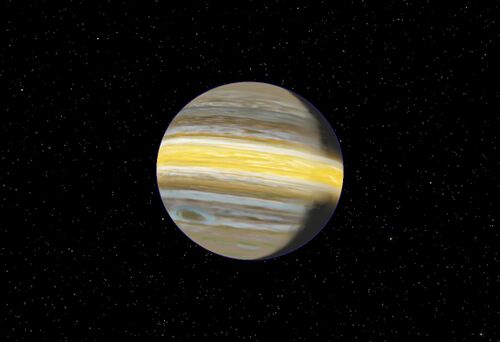Neumann Reactor (A1-0)

The Neumann Reactor is a type of Pseudo-Stellification Engine, that uses self-replicating Von-Neumann Probes to convert a gas giant's top atmospheric layer into energy. This technology is usually developed and utilized by civilizations that have passed the S1 advancement threshold.
Functioning
One or more self-replicating Matter-Energy Conversion Reactors are introduced into the upper atmosphere of the target gas giant or brown dwarf. Self-replicating technology of this type (also known as Neumann tech) will increase in number rapidly given a suitable environment, but Neumann-reactor type stellification does not lend itself to the stellification of white dwarfs.
Supported by Vacuum Balloons, each reactor uses CNO-Cycle Fusion and Particle Synthesis to consume the surrounding atmosphere and convert it into energy and raw materials. The energy produced is released upward as light from a large directional radiator complex on the top of each unit, while the materials are used to build another reactor. Each reactor generally takes about a standard year to replicate, after which the "child" reactor is released to begin its own process of atmospheric consumption and replication while the "parent" unit begins the process again. As the number of reactors increases exponentially, they position themselves in large, meta-stable arrays or "flocks" which optimize material intake while leaving sufficient spacing for safe waste energy outflow.
Although each individual reactor remains widely separated from its fellow's even when maximum deployment is achieved, over orbital distances the massed devices present a virtually continuous field of brilliant illumination (the lowest orbiting moons or habitats may experience a certain amount of "granularity" in the illumination they receive but this is generally just ignored or dealt with using appropriately designed lenses in the habitats mirror and window installations).
Operating at full efficiency, the offspring of a single Neumann reactor can replicate to maximum safe coverage of the entire surface of a standard gas giant or brown dwarf in less than 50 years. In practice, the timescales involved are often much shorter since many users either install multiple coordinated balloons at a time, and/or prefer to only illuminate those orbits they plan to inhabit rather than the entire surrounding volume and limit the spread of the reactors accordingly. A common design methodology is the "Sunline", in which reactors are deployed only around the equator of the central body and are used to illuminate the orbits of the surrounding moons, rings, and habitats.
Known Users
Template:Country data Galactya
In recorded history, Galactya was probably one of the first if not the first civilization to employ this technology. The first recorded use of it was for the construction of the Kantheana Matryoshka Micronode.